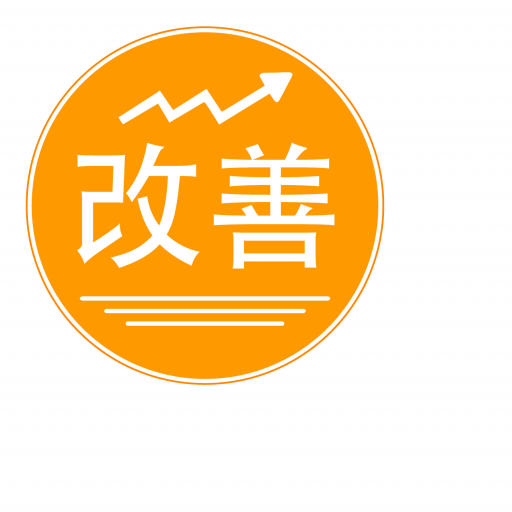An old colleague of mine recently posted on Facebook, “Life/business will not return to normal until we can get stuff done face to face.” While there is some truth to that, if we are going to live in our COVID world for another year, companies cannot wait for getting stuff done face to face, they need to sell now!
But selling during COVID is different, as a client recently said, “I am not sure our sales force have the skills or know-how to sell online.” Sales teams face two challenges selling during COVID, reduced budgets in an uncertain market, and selling when business is virtual. Already half of the B2B companies have reduced their budgets by over 40%. Overall, IT spend is predicted to drop 8% in 2020 – as enterprises spend roughly $300B less than they did in 2019.
A further complication for B2B companies selling internationally. How do U.S. companies sell in Europe where they are barred from traveling, while their European competitors can move around freely? This will pose problems and could result in a loss of market share unless companies develop new tactics to counter the lack of face to face interaction.
Andreesen Horwitz recently said that from their discussions with several CROs and founders they were seeing:
- Cash is critical. Total Contract Values are lower, and there is a 30% drop in upfront cash, as actual payments are delayed or deferred.
- Significant drops in the sales pipeline. Hardest hit are those with companies have sales-led prospecting and have direct multi-stage sales + implementation.
- Increased involvement of execs, e.g., CFOs, in deals and procurement process
- Channel is more critical. The proportion of deals coming from channel and renewal rates relative to bookings are both up.
Andreesen Horwitz provided six strategies for selling during COVID.
- Build pipeline through targeted virtual events. With everyone WFH and easier to schedule, including executives, figure out how to leverage your C-suite effectively. Don’t just rely on webinars with large numbers of attendees featuring execs, but use smaller events focused on specific topics of interest where you can get your CEO or CTO in front of essential buyers. The loss in quantity will be exceeded by what you gain in quality and higher intent. However, as much of this new, the pipeline from virtual events may progress differently from a traditional pipeline. Thus it is critical to understand and monitor the conversion rates of your virtual event funnel.
- Get creative with your Business Development Representatives (“BDR”). If customers can self-serve initially, that will provide marketing qualified leads for BDRs to follow up on. However, to enable customers to self serve, you need to ensure that your website correctly explains and sells your product. If you have insufficient warm leads for your BDRs, consider switching BDRs to customer success managers (CSMs) focusing on adoption, retention, and renewal, since the two talent pools often overlap. Especially in a SaaS business, where the CSM is essential because customer success drives adoption, and adoption reduces churn and drives up renewal rates. Many SaaS companies used this tactic during the 2008-9 recession, and it often helps BDRs better understand customers.
- To renew customers, be flexible on all levers, except the price. It’s always easier to retain a customer and renew, or even expand, an existing account than to acquire a new customer, especially during a downturn. Extending flexibility to customers, when you can, will win customer loyalty and referrals in the long-term, assuming you can deliver successfully. Your current prices will determine your future prices, determining your total addressable market (TAM), so any reduction now has long term effects. Further, once you start negotiating on price, you have become a commodity. When renegotiating or changing contract terms, if possible, look to levers beyond price, such as flexible payment terms or additional professional services.
- Implement a deal desk. If a salesperson gives something away to close a deal, that incentive can quickly become the new standard for all sales. Implement a deal desk, usually in the form of a mailing list or a chain of sign-off for deals over a certain threshold, to maintain deal structure around incentives and discounts. A deal desk will prevent reps from giving away too much.
- Manage the psychology of your salespeople, as well as your quotas. Set expectations that are achievable and realistic, not only because people need to get paid, but because great salespeople need to win. For great salespeople, much like for a top athlete or prizefighter, confidence is a big part of their game. The way they get confidence is they win and have the attitude, “I never miss a number. I usually blow it out. I never lose to a competitor.” Sales numbers feed that psychology, so what if you maintain your sales numbers based on life before COVID, and now, your top salespeople are not getting paid and are losing confidence. Eventually, their psychology will get to the point where they start making silly mistakes. “They don’t listen carefully.” “They’re not patient.” “They press too hard.” You need to support your sales team in keeping their confidence high, and that starts with a reasonable plan and then having an understanding of what’s going on in these cycles.
- Look for channel partners with strong customer relationships and pull from the field. Partners who don’t have to do prospecting but can pull you into existing relationships are the better partners right now. You have to shift your channel strategy from scrappier, more boutique channel partners to more established players who have the relationship and account control. Behavior follows business, so look for the pull from the field sales team to evaluate a partnership and know that it is strategic. Once you see that pull from the field, you can match up your sellers with their sellers, identify the accounts they’re in that want your functionality, and then do the integration that the salespeople want.
Of course, this is just the start. Other questions:
- What metrics should you watch right now?
- How do you qualify leads?
- How do you evaluate the risk v. opportunity of channel partners?
See this Andreesen Horwitz article for a discussion on many of these questions.
Recent Posts
The Downfall of Boeing: A Lesson in Core Values
Boeing’s 737 Max issues highlighted the company’s sacrifice of safety for financial performance, resulting in a tarnished reputation. The prioritization of profit over core values also damaged the FAA’s credibility and revealed a lack of accountability for top executives. This downfall serves as a reminder of the importance of maintaining core values and prioritizing them over short-term financial gains.
Resolutions, Here We Go Again.
In reflecting on 2021 resolutions, the author scored themselves in three categories and sought to improve success in 2022 by addressing friction points. Drawing on advice from social psychologist Wendy Wood, the author identified areas to reduce or increase friction in their failed resolutions. By making these adjustments, the author aims to enhance their goal achievement and encourages others to consider friction when setting resolutions.
You need to take an extended vacation. No, seriously, you do.
COVID has taken a toll on all of us. If you have not taken an extended vacation in a while where you disconnect, you need to now. You and your business will benefit.
Becoming Famous in Your Niche: The Success Story of Linn Products Limited
In a previous discussion, I highlighted the importance of being famous for something. Being well-known in your niche can help you: Concentrate on your strengths Connect with your target audience Communicate your offerings more effectively Receive referrals Identify...
Understanding and Optimizing Your Cash Conversion Cycle
Understanding and optimizing the Cash Conversion Cycle is crucial for business growth, as it impacts cash flow and the ability to access external capital. This cycle consists of four components: Sales, Make/Production & Inventory, Delivery, and Billing and Payments. To improve the Cash Conversion Cycle, companies can eliminate mistakes, shorten cycle times, and revamp their business models.
Discovering Your Niche: Why You Need to Be Famous for Something
As an entrepreneur, it’s crucial to specialize in a specific area and become famous for something, allowing you to generate referrals and build your brand. Understanding the “job” you’re hired for helps you stand out in the marketplace and communicate your value proposition effectively. By providing value to your clients, you can adopt a value-based pricing approach, ensuring your business remains competitive and maintains a strong market presence.
Rethinking Your Pricing Model: Maximizing Margins and Providing Value
Rethink your pricing model by focusing on the value you provide and your customers’ Best Alternative To a Negotiated Agreement (BATNA). This approach can help you maximize margins while delivering better value to your clients. Assess your offerings and brainstorm with your team to identify pricing adjustment opportunities or eliminate commodity products or services.
Do you know your Profit per X to drive dramatic growth?
I recently facilitated a workshop with several CEOs where we worked on the dramatic business growth model components. One of the questions that I had asked them beforehand was, "What is Your Profit/X?" The results showed that there this concept is not clear to many....
The War for Talent: 5 Ways to Attract the Best Employees
In today’s War for Talent, attracting the best employees requires a focus on value creation, core customer, brand promise, and value delivery. Clearly articulate your company’s mission, identify your “core employee” based on shared values, and offer more than just a salary to stand out as an employer. Utilize employee satisfaction metrics and showcase your company’s commitment to its workforce on your website to make a strong impression on potential candidates.
Are you killing your firm’s WFH productivity?
Productivity remained during WFH with COVID. However, further analysis found that hourly productivity fell and was compensated for by employees working more hours. What was the culprit – Meetings. Want to increase productivity, have fewer meetings.











